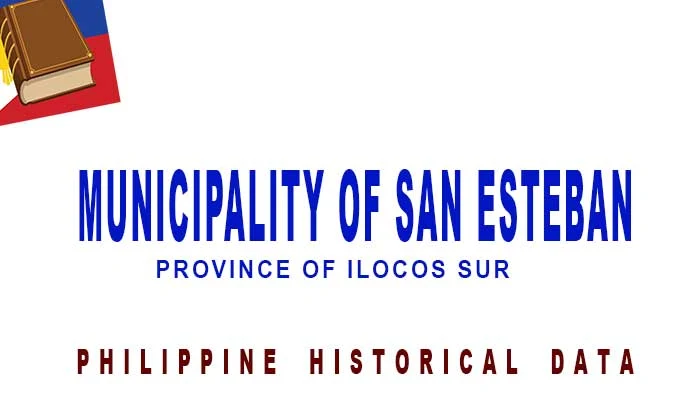MUNICIPALITY OF SAN ESTEBAN (ILOCOS SUR), History and Cultural Life of
[p. 1]
HOW SAN ESTEBAN GOT ITS NAME
Long before the discovery of the Philippines by Ferdinand Magellan, there lived in what is now the Poblacion of San Esteban a man who had a beautiful daughter in the whole town. Suitors from different places came with precious gifts to woo her, but nobody succeeded in winner her heart.
One day, a poorly clad young man came along. He heard about the beautiful young woman, and so he wanted to try his luck. He boldly introduced himself and offered no gift except a small piece of stone. This piece of stone always gave him good luck.
The young lady was so much impressed by the boldness of the young man that she accepted him at once. She told the young man to come back after a week for the wedding. The news about the wedding spread like fire.
Eban, the young man, thanked "Kabunian," the powerful god of the north, for his wonderful luck. The day of the wedding came but Eban had not come. The young lady was very much depressed. Three days later, Eban arrived. But the young lady's wrath knew no bounds that she took the stone and threw it at Eban.
A strange thing happened. Eban turned into a stone. "Ilocana," the young woman, regretted what she had done. She wept bitterly over the place of the stone, and as her tears dropped on it, the stone became bigger and bigger. Around the big stone grew small ones.
As time went on, the place was called San Esteban in honor of Eban, who became a stone.
Today, San Esteban has abundant supply of stones from which the people make mortars, pig troughs, corn grinders, and other useful articles. Nowhere in Northern Luzon can
[p. 2]
we find this kind of stone except in San Esteban, the town noted for the stone industry.
Respectfully submitted:
(SGD.) JOSEFINA E. VERGARA
Grade VI Teacher
Municipality: SAN ESTEBAN

